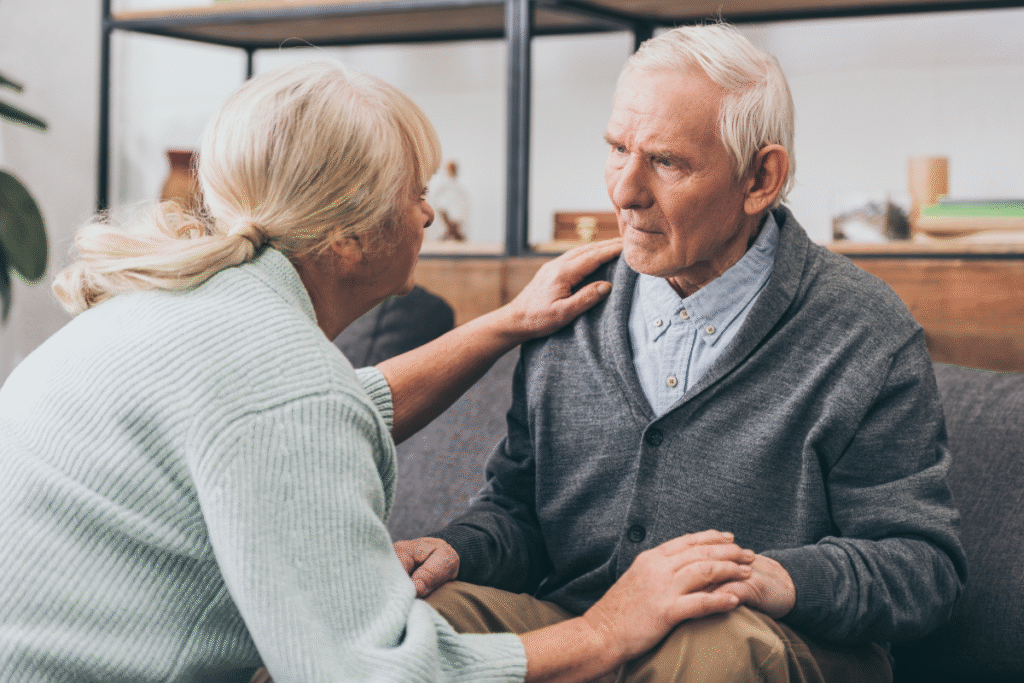The Emotional Benefits of Home Care for Seniors and Their Families
When considering the best way to support aging loved ones, families often weigh the advantages of institutional care versus in-home care for seniors. While nursing homes and assisted living facilities offer clinical support, they often lack the emotional nourishment and personal connection that many seniors need to thrive. This is where home care steps in as a powerful alternative. The emotional benefits of home care go far beyond convenience or cost. Home care provides an environment where seniors can enjoy comfort, familiarity, and a deeper sense of control over their daily lives. The emotional impact of staying in a cherished space—surrounded by memories, pets, or family—can be transformative. For families, home care services provide peace of mind, knowing their loved one is safe, cared for, and emotionally supported. In this article, we’ll explore how personalized in-home care improves not only mental health but also enhances quality of life for seniors and brings emotional relief to family members alike. Key Takeaways: Emotional Benefits of Home Care Familiar environments reduce anxiety and support emotional stability for seniors. Personalized care plans foster trust, comfort, and improved mental health. Families experience peace of mind knowing their loved ones are receiving compassionate, one-on-one attention. Companionship and connection prevent isolation and boost emotional resilience. Home care professionals adapt care based on evolving emotional and physical needs. Why Emotional Well-being Matters in Senior Care As we age, emotional and mental health become just as critical as physical health. In fact, studies show that emotional well-being can significantly influence physical outcomes, including immune system strength, recovery times, and even life expectancy. Unfortunately, many traditional care settings focus heavily on medical tasks and overlook the emotional needs of seniors. According to a study published by the NIH, older adults who report high levels of emotional support tend to experience better health and fewer cognitive declines. Emotional health plays a central role in combating feelings of loneliness, depression, and anxiety—issues that are prevalent in institutional care environments where personal attention may be limited. This is where the benefits of home care truly shine. Home care helps seniors maintain emotional balance by offering companionship, personalized attention, and a stable, familiar setting. It addresses the full spectrum of well-being, blending physical and emotional support in a way that promotes overall health and happiness. The Emotional Benefits of Home Care for Seniors For many seniors, the desire to remain at home is deeply tied to emotional well-being. Home is more than just a physical space—it’s a place of memories, routines, and personal identity. Receiving care in this familiar environment offers emotional benefits that institutional settings often can’t replicate. Comfort in Familiar Surroundings Living in one’s own home helps maintain a sense of normalcy. Seniors can continue with daily rituals, sleep in their own beds, and enjoy the freedom to move through their space on their own terms. This familiarity brings emotional security and reduces feelings of disorientation or confusion that can occur in new environments. Independence and Control In-home care services empower seniors to maintain their independence. From choosing meal times to deciding what activities to engage in, having control over one’s routine can significantly boost self-esteem and emotional resilience. It reinforces a sense of dignity that institutional care may unintentionally diminish. Consistent, Personalized Care Builds Trust Unlike rotating staff in care facilities, home care providers offer continuity. This consistency builds trust and deepens the emotional bond between seniors and caregivers. A compassionate relationship with a caregiver not only provides practical assistance but also fulfills emotional needs through companionship and understanding. Reduced Stress and Anxiety Transitions into nursing homes or assisted living can be traumatic, leading to increased anxiety and emotional stress. In contrast, home care helps mitigate this by supporting gradual care integration within the comfort of home. Seniors feel less overwhelmed and more at ease, knowing they are in a safe, familiar place. Emotional Stability and Nourishment The one-on-one attention that home care professionals provide ensures that seniors’ emotional needs are addressed daily. Whether it’s a reassuring conversation, a shared laugh, or a walk outside, these small moments foster emotional nourishment and stability. Emotional consistency plays a crucial role in promoting mental health home care outcomes. How Home Care Enhances Family Peace of Mind When a loved one needs care, the emotional toll on family members can be significant. From managing medical appointments to handling daily tasks, caregiving often leads to stress, guilt, and burnout. Choosing in-home care for seniors not only benefits the care recipient—it also provides families with essential emotional relief. Reduced Caregiver Stress Families often struggle to balance caregiving with work, parenting, and personal obligations. Home care eases this burden by entrusting daily care tasks to trained professionals. This delegation allows family members to focus on meaningful time with their loved one, rather than being consumed by logistical responsibilities. Confidence in Professional, Personalized Support Knowing that a senior is receiving expert care tailored to their emotional and physical needs brings immeasurable peace of mind. Synchrony’s personalized in-home care plans are designed to address the whole person—ensuring dignity, safety, and emotional wellness every step of the way. Regular Communication and Updates Home care services often include frequent communication between caregivers and family members. This transparency helps families stay informed about their loved one’s condition and emotional state, which in turn fosters trust and reduces worry. Emotional Comfort from Seeing Loved Ones Happy Perhaps the greatest benefit of all is seeing a loved one comfortable and emotionally fulfilled. Families often report feeling relieved and emotionally uplifted when they see their senior thriving at home—supported by care professionals who truly understand their needs. Emotional Benefits of Personalized In-Home Care Plans One of the most powerful aspects of home care services is their ability to provide truly personalized support. No two seniors are alike, and personalized in-home care ensures that emotional and cultural needs are taken into account alongside physical care requirements. Care Plans Tailored to Emotional Needs Generic care models can miss the mark when it comes to emotional health. Personalized
The Emotional Benefits of Home Care for Seniors and Their Families Read More »














